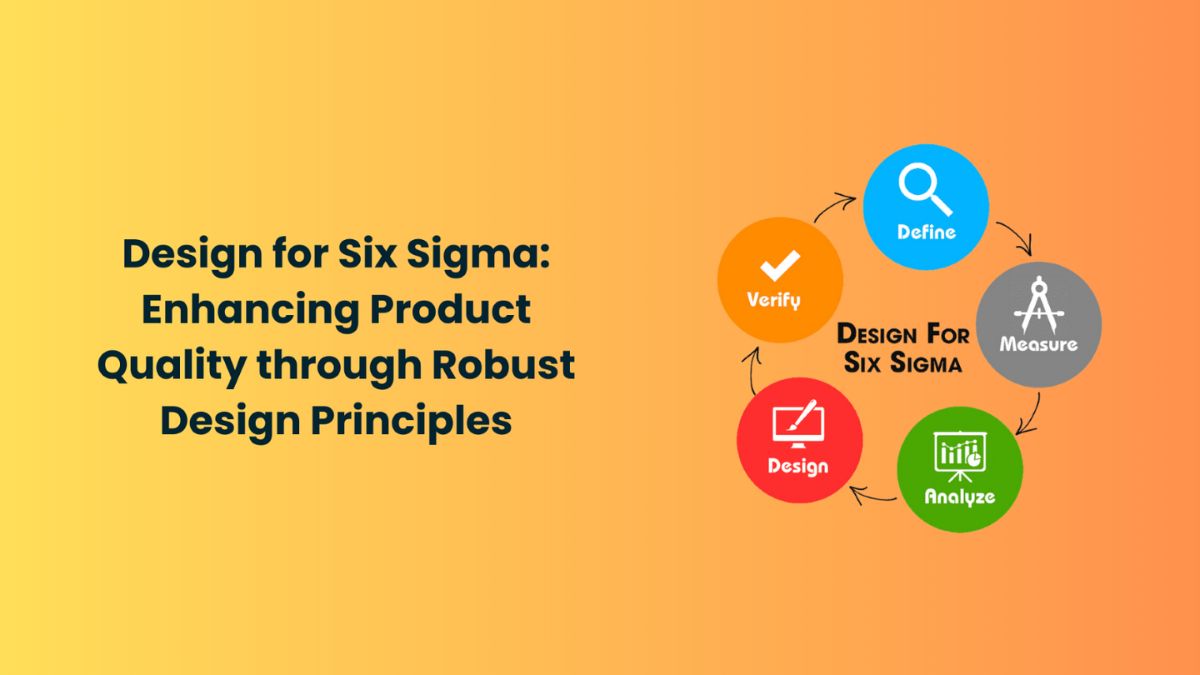
Superior product quality is required for a company to be successful. When this occurs, Six Sigma Training (SST) and Design for Six Sigma (DFSS) enter the picture, providing a complete framework that eliminates errors and variances, resulting in improved product quality. Businesses may proactively anticipate and mitigate potential risks by incorporating the DFSS principles into the product design process, resulting in things that meet and exceed consumer expectations. In this blog, we will explore the basic concepts of Design for Six Sigma and how they help to create products that stand out in terms of dependability, performance, and customer satisfaction.
The Essence of Design for Six Sigma
Six Sigma Training has been known for its data-driven approach to process optimization and defect reduction for many years. Design for Six Sigma develops these concepts by putting them into the first phases of product development. Instead of focusing primarily on quality assurance during production, DFSS lays a heavy emphasis on preventing issues before they arise. A proactive strategy reduces the need for subsequent, costly rework or recalls by ensuring that the product is created to be dependable and capable of delivering consistent performance.
The Phases of Design for Six Sigma
Define, Measure, Analyse, Design, and Verify (DMADV) are the five phases of the DFSS process. The Define phase establishes the framework for the subsequent phases by explicitly describing the project goals and customer requirements. During the Measure phase, the status of the product or process is examined, and causes of variance are found. The Analyse phase dives further into these disparities and their underlying reasons to give the design team a complete picture of potential difficulties.
During the Design phase of the DFSS, creative solutions are developed to remedy the highlighted challenges. Modern design methodologies such as Failure Mode and Effects Analysis (FMEA) and Quality Function Deployment (QFD) influence the design decisions made during this phase. The systematic investigation of failure modes and the alignment of product attributes with customer needs result in a more durable, dependable, and purpose-consistent design.
The proposed design is thoroughly tested and validated during the final Verify process. This step verifies that the design changes and enhancements have the required impact and achieve the desired goals. It is critical in bridging the gap between theoretical design advances and their practical use in everyday situations.
Benefits and Impact
There are various advantages to using Design for Six Sigma ideas. It mostly produces items with much fewer flaws and variances. This results in higher customer satisfaction and lower operational expenses for rework, warranty claims, and recalls. Furthermore, DFSS promotes innovation by fostering cross-functional cooperation and a broad perspective on product creation.
Businesses that employ Design for Six Sigma may aim to gain an industry competitive advantage. A company’s market position may be boosted by a reputation for creating incomparable items in dependability and performance, which can also increase consumer loyalty and brand perception. The discipline instilled by DFSS’s structured approach improves design and development teams by improving communication, decision-making, and a shared focus on quality.
Conclusion
When a company’s performance is closely related to the quality of its products, Design for Six Sigma emerges as an effective method for exceeding and meeting consumer expectations. Businesses may proactively resolve any problems and deviations by incorporating Six Sigma Training principles into the early stages of product design, resulting in goods that are not only trustworthy but also unique. The Define, Measure, Analyse, Design, and Verify steps of the DFSS process give a systematic technique for producing strong designs that dramatically change how businesses produce and deliver value to their consumers. Adopting Design for Six Sigma is more than simply a technique; it is a commitment to excellence that provides the framework for long-term success in today’s competitive environment.